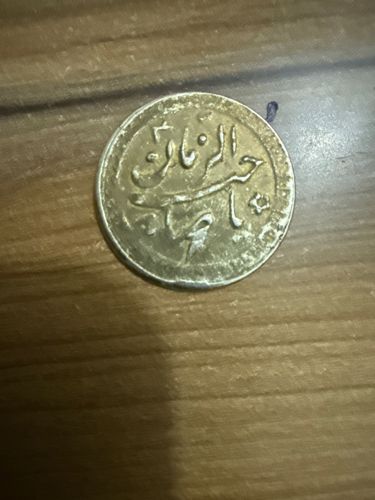Ottoman Empire Ghazi
Country of Origin: Ottoman Empire (modern-day Turkey and surrounding regions)
Year of Issue: Late 17th to early 20th Century (precise date requires clearer reading of mint and regnal year, which is typically found on the reverse side or within the calligraphic design not fully visible)
Denomination: Likely an Akçe or Para (specific denomination is hard to determine without clearer images of all inscriptions and sides, but these were common low denominations)
Composition: Copper or Bronze

Brief Description
The coin features Arabic script. The most prominent visible text appears to be 'سلطان' (Sultan) and 'خان' (Khan), with other difficult-to-decipher text. The design is fairly simple, typical of older Islamic coinage, often focusing on calligraphic elements rather than pictorial representations. The coin appears to be made of a bronze or copper alloy and shows signs of wear and age.
Historical Significance
This coin is from the Ottoman Empire, one of the most powerful and long-lasting empires in history. Coins from this period are significant as they represent the economic and political stability (or instability) of the empire. The 'Sultan Khan' inscription points to it being issued under one of the Ottoman Sultans. Such coinage played a crucial role in the vast trade networks that spanned across Europe, Asia, and Africa during the Ottoman rule.
Estimated Value
The estimated value of this coin is highly variable depending on its exact identification (ruler, mint, date), condition, and rarity. Based on its apparent age and material, and assuming it's a common type in circulated condition, it would likely be in the range of $5 - $50. Rare varieties or higher grades could fetch more.
Care Instructions
Handle the coin by its edges to avoid transferring oils from your skin. Store it in a cool, dry place, ideally in a non-PVC coin holder or slab to protect it from environmental damage and physical abrasion. Do not attempt to clean the coin, as this can severely damage its surface and reduce its numismatic value.
Created At: 2025-09-03T18:24:53.509192